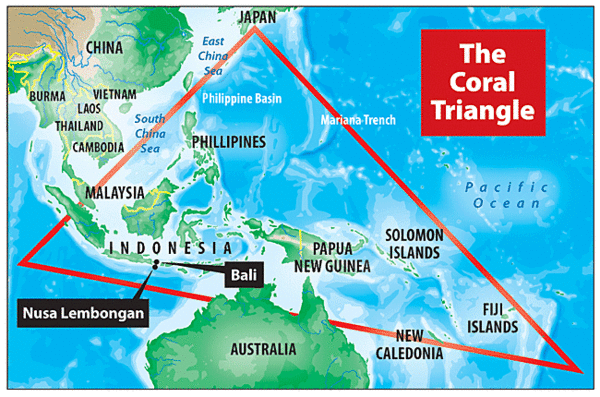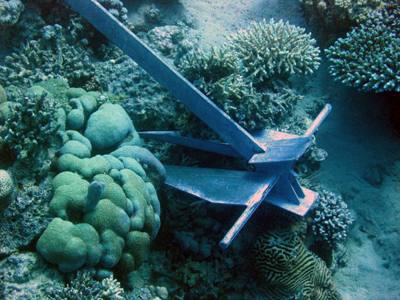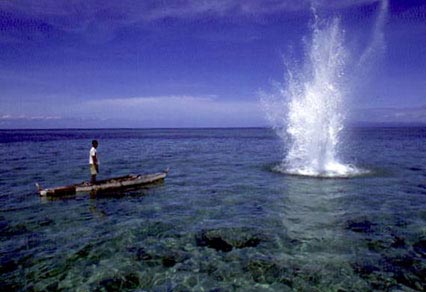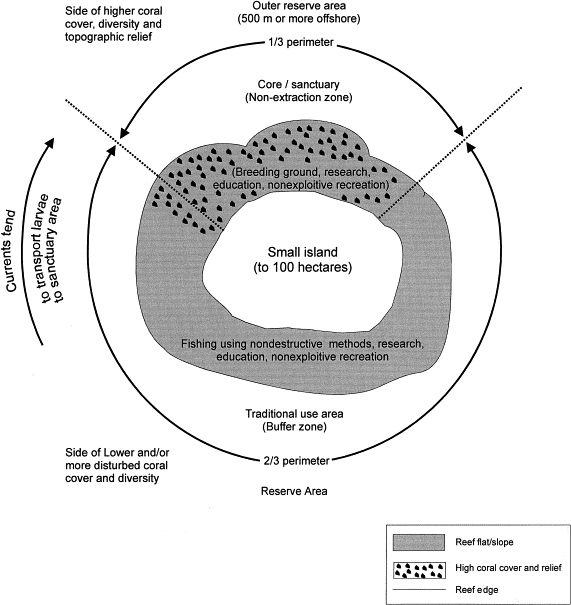CommunityManagement: Difference between revisions
No edit summary |
|||
| Line 21: | Line 21: | ||
<br /> http://3.bp.blogspot.com/-OQNwK7YzJdo/UC8mVqq9CLI/AAAAAAAAAWs/eMheX-u77PM/s1600/dynamite_fishing.jpg | <br /> http://3.bp.blogspot.com/-OQNwK7YzJdo/UC8mVqq9CLI/AAAAAAAAAWs/eMheX-u77PM/s1600/dynamite_fishing.jpg | ||
<br />'''Pollution Runoff''' <ref> http://travel.nytimes.com/2007/06/24/travel/24headsup.html?pagewanted=all&_r=0 </ref> | <br />'''Pollution Runoff''' <ref> http://travel.nytimes.com/2007/06/24/travel/24headsup.html?pagewanted=all&_r=0 </ref> | ||
*CO2 emissions | *'''CO2 emissions''' | ||
*Local and tourism trash | ** | ||
*Local and tourism trash | |||
'''Population Density''' | |||
'''Construction-proned Zones''' | |||
'''Economic Instability''' | |||
'''Ocean Acidification''' <ref> "Increased Ocean Acidity ." Global Climate Change . Environmental Protection Agency , 30 10 2012. Web. 2 Apr 2013. <http://epa.gov/climatestudents/impacts/signs/acidity.html>. </ref> | '''Ocean Acidification''' <ref> "Increased Ocean Acidity ." Global Climate Change . Environmental Protection Agency , 30 10 2012. Web. 2 Apr 2013. <http://epa.gov/climatestudents/impacts/signs/acidity.html>. </ref> | ||
*Carbon dioxide is the output of the fossil fuel consumption process that causes ocean acidification when absorbed. Fossil fuels such as, coal, oil, petroleum, and natural gas, emit a negative externality, a greenhouse gas known as carbon dioxide (CO2) into the atmosphere. Carbon dioxide emissions either evaporate in the atmosphere and form acid rain or runoff into surrounding bodies of water. Once in the water, larger bodies of water such as, oceans, absorb the gas and create carbonic acid. As a result, carbonic acid increases the water’s acidity level and causes coral bleaching and ocean acidification to occur '''Coastal Development and Deforestation''' | *Carbon dioxide is the output of the fossil fuel consumption process that causes ocean acidification when absorbed. Fossil fuels such as, coal, oil, petroleum, and natural gas, emit a negative externality, a greenhouse gas known as carbon dioxide (CO2) into the atmosphere. Carbon dioxide emissions either evaporate in the atmosphere and form acid rain or runoff into surrounding bodies of water. Once in the water, larger bodies of water such as, oceans, absorb the gas and create carbonic acid. As a result, carbonic acid increases the water’s acidity level and causes coral bleaching and ocean acidification to occur '''Coastal Development and Deforestation''' | ||
| Line 28: | Line 32: | ||
*Currently the oceanic pH has decreased from 8.2 to 8.1. Although a small decrease, .1, any change in acidity, turbidity, water temperature, or salinity can drastically impact marine organisms and coral reef structures. For example, if pH levels decrease too much, organisms that survive using carbonate shells for protection can dissolve in acidic waters. | *Currently the oceanic pH has decreased from 8.2 to 8.1. Although a small decrease, .1, any change in acidity, turbidity, water temperature, or salinity can drastically impact marine organisms and coral reef structures. For example, if pH levels decrease too much, organisms that survive using carbonate shells for protection can dissolve in acidic waters. | ||
=== Effective Community Management Methods === <ref> http://travel.nytimes.com/2007/06/24/travel/24headsup.html?pagewanted=all&_r=0 </ref> | |||
'''Eco-Certification Programs for tourism operators''' | |||
'''Nature Conservancy’s Coral Triangle Center''' | |||
*The Nature Conservancy's Coral Triangle Center "protects whale migration routes between the Indian and Pacific Oceans.” | |||
'''Komodo National Park''' | |||
* Komodo National Park banned blast fishing allowing for hard coral growth coverage by 60% within 6 years. | |||
'''Establish well-enforced no-take zone''' | |||
'''Mangrove Growth''' <ref> http://scientistatwork.blogs.nytimes.com/2013/01/29/diving-into-the-coral-triangle/?ref=reefs </ref> | |||
* Communities in Indonesia are improving the resilience of the reefs and its habitats through maintaining and promoting mangrove growths. Mangroves absorb and filter greenhouse gas emissions as well as pollutants as a result of runoff before they enter the ocean and harm the corals and fish. Mangroves also provide nursery and protected areas for small fish. | |||
| |||
====Characteristics of successful community-based management==== | ====Characteristics of successful community-based management==== | ||
<ref> http://www.worldfishcenter.org/resource_centre/LessonsLearned1804%20-%20FINAL.pdf </ref> | <ref> http://www.worldfishcenter.org/resource_centre/LessonsLearned1804%20-%20FINAL.pdf </ref> | ||
Revision as of 15:23, 16 April 2013
Community-Based Reef Management
Case Study Location- The Coral Triangle
The Coral Triangle includes Indonesia, the Philippines, Malaysia, Papua New Guinea, the Solomon Islands, and Timor-Leste. Currently, the Coral Triangle sustains 590 species of reef-building coral and 4,000 species of fish. [1] In addition, the Coral Triangle provides 120 million people that live in the surrounding area with food, income, and protection from harsh storms. Today, there is a multi-billion dollar tuna industry that relies heavily on the Coral Triangle reefs and its inhabitants, tuna. [2] However, because tuna is a common resource, a resource that is both non-excludable but rival in consumption, this abundant species is experiencing an effect known as the tragedy of the commons. Tragedy of the commons is the tendency of any resource that is un-owned and hence non-excludable to be overused and under maintained. [3] Despite the lack of regulation in the past, many conservationists are educating local fishermen about the destructive fishing methods used such as, dynamite and cyanide.

The Causes of Coral Reef Habitat Depletion
Unrestricted Tourism[4]
- Diving- touching corals with hands of fins harms and damages the exterior of the coral and may cause coral polyps to die.
- Boating/anchoring- Boating creates turmoil in the water and may kill fish near the surface. On the other hand, anchors may land near/on coral polyps causing a coral uproot when trying to raise the anchor to the surface.

- For example, in the past, many cruise lines released waste water close to coral reefs. Now, restrictions require cruise lines to release waste water at least 4 miles from coral reef boundaries. Another example includes the Great Barrier Reef in Australia. Here, 1.9 million visitors visit the reef annually drawing in $4.2 billion in tourism revenue.
Coral Bleaching[5]
- Coral bleaching, an effect of ocean acidification, is the loss of all or some symbiotic algae and photosynthetic pigments by the coral animal resulting in their white calcium carbonate skeleton becoming visible through the now translucent tissue layer making them appear white or ‘bleached’ of their original color and increase the coral’s mortality rate. Many sunscreens and carbon dioxide emissions cause this coral bleaching effect, especially in warm water temperatures. [6]

Depletion of Natural Resources
- Corals- The coral mining and harvesting industries deplete this natural resource for fashion and medical purposes as well as for construction materials. [7]
- Fish- Many fishing industries deplete reef fish species through destructive fishing practices such as, cyanide and dynamite. In addition, fishermen plan their fishing schedules based upon spawning seasons which allows for a large fish population in a confined area to increase both fish yields and profit.

Pollution Runoff [8]
- CO2 emissions
- Local and tourism trash
Population Density Construction-proned Zones Economic Instability Ocean Acidification [9]
- Carbon dioxide is the output of the fossil fuel consumption process that causes ocean acidification when absorbed. Fossil fuels such as, coal, oil, petroleum, and natural gas, emit a negative externality, a greenhouse gas known as carbon dioxide (CO2) into the atmosphere. Carbon dioxide emissions either evaporate in the atmosphere and form acid rain or runoff into surrounding bodies of water. Once in the water, larger bodies of water such as, oceans, absorb the gas and create carbonic acid. As a result, carbonic acid increases the water’s acidity level and causes coral bleaching and ocean acidification to occur Coastal Development and Deforestation
Ocean pH Level [10]
- Currently the oceanic pH has decreased from 8.2 to 8.1. Although a small decrease, .1, any change in acidity, turbidity, water temperature, or salinity can drastically impact marine organisms and coral reef structures. For example, if pH levels decrease too much, organisms that survive using carbonate shells for protection can dissolve in acidic waters.
=== Effective Community Management Methods === [11] Eco-Certification Programs for tourism operators Nature Conservancy’s Coral Triangle Center
- The Nature Conservancy's Coral Triangle Center "protects whale migration routes between the Indian and Pacific Oceans.”
Komodo National Park
- Komodo National Park banned blast fishing allowing for hard coral growth coverage by 60% within 6 years.
Establish well-enforced no-take zone Mangrove Growth [12]
- Communities in Indonesia are improving the resilience of the reefs and its habitats through maintaining and promoting mangrove growths. Mangroves absorb and filter greenhouse gas emissions as well as pollutants as a result of runoff before they enter the ocean and harm the corals and fish. Mangroves also provide nursery and protected areas for small fish.
Characteristics of successful community-based management
It is important to create a coral reef management plan with community input that includes not only ecological conditions but also socioeconomic concerns such as environmental regeneration and preservation of the reefs and livelihood enhancement for communities. We must be careful to not trade off environmental preservation for poverty. The planning process should be transparent and fair. There must be successful communication between administrative/government officials and stakeholders in the community. Community members must have clear and concise rules of access, withdrawal, and exclusion in regards to reefs and reef fish. Some examples of effective rules include: issuing a limited number of fishing permits and creating user organizations so as to monitor any illegal withdrawal of reef fish.
Capacity building within the community, including education and empowerment, is a pivotal part of community-based management. It ensures that community members are both made cognizant of the importance of coral reefs in global biodiversity and take ownership of them. This can be made possible through comprehensive public awareness campaigns and institutional buy-ins. In the event of conflicts, this capacity building combined with effective communication between stakeholders will facilitate conflict resolution.
In the process of planning truly effective community based management, allowing for iterative feedback loops is essential. These feedback loops make it so that government, interested NGOs, and community members can learn from past mistakes and work together for a more sustainable future.
Case Studies of successful community-based management:
Indonesia: Coral Reef Rehabilitation and Management Program I
In Indonesia, the Coral Reef Rehabilitation and Management Program I was put into place to combat overfishing and overall reef degradation. After this community-based project was implemented, compliance increased by 10%. Illegal and over fishing as well as coral mining in pilot locations decreased by 50% after the management project was constructed. Some of the lessons learned from Indonesia’s experiment with community-based coral reef management include that communities must be central to the planning, implementation, and post-project portions of the project. Also, there should be communication and agreement between national/state/local governments as well as coastal communities.

Conclusion
- Through identifying three community-based management systems located in the Coral Triangle, Indonesia, San Salvador Island, and other provinces in the Philippines, scientists analyze the impacts communities have on both marine waters and marine biodiversity. After identifying the island’s local factors that contribute to marine destruction, scientists and government officials work to develop a community-based management plan to prevent and protect the surrounding waters, plants, animals, and coral reef ecosystems. With proper funding and support, educating the community, regulating industrial runoff, establishing non-fishing reserves, training community leaders, protecting whale migration routes, dividing reef zones based on breeding grounds, requiring fishing permits, banning coral mining, and increasing mangrove growths are just a few community-based management projects implemented throughout the Coral Triangle region. Since implementing these community-based management projects, the Coral Triangle region’s coral reefs are improving in health and rebuilding fish populations.
- ↑ http://scientistatwork.blogs.nytimes.com/2013/01/29/diving-into-the-coral-triangle/?ref=reefs
- ↑ http://worldwildlife.org/places/coral-triangle
- ↑ Cowen, Tyler, and Alex Tabarrok. Modern Principles of Economics. 2nd ed. New York : Worth , 2011. 348. Print.
- ↑ http://travel.nytimes.com/2007/06/24/travel/24headsup.html?pagewanted=all&_r=0
- ↑ Lough, J, and M van Oppen. "Introduction: Coral Bleaching — Patterns, Processes, Causes and Consequences." Coral Bleaching. 205. (2009). Print. <http://link.springer.com/content/pdf/10.1007/978-3-540-69775-6_1>.
- ↑ Danovaro, Roberto. "Sunscreens Cause Coral Bleaching by Promoting Viral Infections." Environmental Health Perspectives. 116.4 (2008): 441-447. Web. 16 Apr. 2013.
- ↑ "Mining and Harvesting." Coral Reef Alliance . The Coral Reef Alliance , n.d. Web. 2 Apr 2013. <http://www.coral.org/resources/issue_briefs/mining_and_harvesting>.
- ↑ http://travel.nytimes.com/2007/06/24/travel/24headsup.html?pagewanted=all&_r=0
- ↑ "Increased Ocean Acidity ." Global Climate Change . Environmental Protection Agency , 30 10 2012. Web. 2 Apr 2013. <http://epa.gov/climatestudents/impacts/signs/acidity.html>.
- ↑ Walsh, Brian. "Sea Changes: Ocean Acidification Is Worse Than It’s Been for 300 Million Years." Time 02 03 2012, n. pag. Print. http://science.time.com/2012/03/02/sea-changes-ocean-acidification-is-worse-than-its-been-for-300-million-years/
- ↑ http://travel.nytimes.com/2007/06/24/travel/24headsup.html?pagewanted=all&_r=0
- ↑ http://scientistatwork.blogs.nytimes.com/2013/01/29/diving-into-the-coral-triangle/?ref=reefs
- ↑ http://www.worldfishcenter.org/resource_centre/LessonsLearned1804%20-%20FINAL.pdf
- http://travel.nytimes.com/2007/06/24/travel/24headsup.html?pagewanted=all&_r=0
- http://www.nytimes.com/2012/07/14/opinion/a-world-without-coral-reefs.html
- http://scientistatwork.blogs.nytimes.com/2013/01/29/diving-into-the-coral-triangle/?ref=reefs
- http://www.coralscience.org/main/articles/climate-a-ecology-16/the-coral-triangle
- http://ambergriscaye.com/reefbriefs/briefs13.html
- http://worldwildlife.org/places/coral-triangle
- http://en.wikipedia.org/wiki/Community_management
- Cowen, Tyler, and Alex Tabarrok. Modern Principles of Economics. 2nd ed. New York : Worth , 2011. 348. Print.
- Lough, J, and M van Oppen. "Introduction: Coral Bleaching — Patterns, Processes, Causes and Consequences." Coral Bleaching. 205. (2009). Print. <http://link.springer.com/content/pdf/10.1007/978-3-540-69775-6_1>.
- Danovaro, Roberto. "Sunscreens Cause Coral Bleaching by Promoting Viral Infections." Environmental Health Perspectives. 116.4 (2008): 441-447. Web. 16 Apr. 2013.
- "Mining and Harvesting." Coral Reef Alliance . The Coral Reef Alliance , n.d. Web. 2 Apr 2013. <http://www.coral.org/resources/issue_briefs/mining_and_harvesting>.
- "Increased Ocean Acidity ." Global Climate Change . Environmental Protection Agency , 30 10 2012. Web. 2 Apr 2013. <http://epa.gov/climatestudents/impacts/signs/acidity.html>.
- Walsh, Brian. "Sea Changes: Ocean Acidification Is Worse Than It’s Been for 300 Million Years." Time 02 03 2012, n. pag. Print. http://science.time.com/2012/03/02/sea-changes-ocean-acidification-is-worse-than-its-been-for-300-million-years/